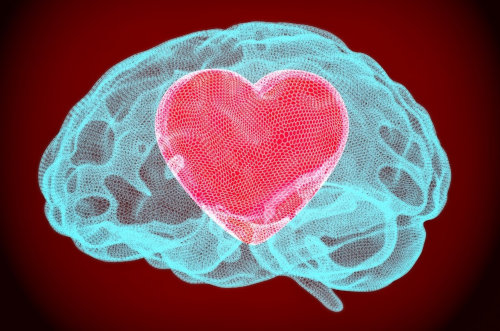Last updated March 25th, 2024
The transformative power of yoga therapy in trauma recovery rests on a growing body of research that underscores its multifaceted benefits for healing. Read on for a summary of research that supports the use of yoga therapy in trauma recovery.
Rooted in traditional practices and informed by advances in modern neuroscience, yoga therapy presents itself as a contemporary therapeutic intervention. Yoga therapy can help address the profound psychological and physiological symptoms brought about by trauma.
Yoga Practices Shown To Alleviate Symptoms of PTSD
A cornerstone study by Cabral, Meyer, and Ames emphasizes that yoga-based interventions, when used as adjuncts to traditional therapies, produce statistically significant improvements in major psychiatric conditions including PTSD.1
A 2023 study by Zaccari et al.2 has been pivotal in establishing yoga therapy for trauma as an evidence-based treatment for PTSD, with approaches based on the transformative Trauma Center Trauma-Sensitive Yoga (TCTSY) program, marking a significant advancement in PTSD treatment within the field of yoga therapy.
The therapeutic power of yoga goes beyond symptom alleviation. Dale et al. noted that regular yoga practice can boost self-concept and provide numerous yoga-specific advantages. In other words, regular yoga practice can shift our perceptions of ourselves. Improve self-concept acts as a shield against the negative psychological impacts of abuse, especially in relation to self-worth and coping strategies.3
Yoga As A Comprehensive Therapeutic Modality
Notably, yoga therapy stands out not just as a symptom mitigator, but as a comprehensive therapeutic modality. The science behind it is intriguing.
Farb, Segal, and Anderson spotlight how mindfulness practices integral to yoga can reshape the brain, heightening awareness of internal sensations.4 This neuroplastic effect provides trauma survivors tools to better navigate and process their experiences, merging the cognitive and the somatic. This heightened body-mind connection becomes especially pivotal in trauma recovery, addressing the common symptoms of dissociation and disconnection from the body that are hallmarks of unresolved trauma.
Furthermore, Dick et al. show how yoga might help mitigate PTSD symptoms by enhancing psychological flexibility and reducing the reliance on expressive suppression as a coping mechanism.5 Suppressing emotional expression can have negative emotional and psychological effects. Yoga can provide other emotional coping methods.
Such findings are bolstered by research from Streeter et al., which suggests that yoga harmonizes the body’s stress systems, thereby potentially alleviating symptoms of trauma-related conditions.6 This alignment of the body’s systems paves the way for the nervous system to signal safety. This is the foundational aim of yoga therapy in trauma recovery: establishing a felt sense of safety. Through consistent practice, this not only changes the brain by altering its inputs, but also promotes the restoration of healthy nervous system function.
Yoga and Healthy Nervous System function In Trauma
The interplay between yoga and the autonomic nervous system is a vital facet of the evidence-based aspects of the yoga therapy approach for trauma recovery. As van der Kolk describes in his seminal book, “The Body Keeps the Score”, the body retains the memory of trauma with reverberations echoing in the biological stress response and how traumatic events are processed and remembered.7 West, Liang, and Spinazzola further contend that yoga therapy equips individuals to regulate their emotional responses safely, fostering a sensation of security within one’s body.8
As trauma travels through the cognitive and somatic dimensions of an individual—whether from violent crimes, sexual assault, intimate partner or domestic violence—yoga therapy stands poised as a potential game-changer. It offers a holistic approach that taps into the body’s inherent wisdom, steering trauma survivors towards a path of recovery and rediscovery of their innate sense of wholeness.
Reference Literature and Research
- Cabral, P., Meyer, H. B., & Ames, D. (2011). Effectiveness of yoga therapy as a complementary treatment for major psychiatric disorders: a meta-analysis. The primary care companion for CNS disorders, 13(4), PCC.10r01068. https://doi.org/10.4088/PCC.10r0106
Yoga-based interventions have demonstrated statistically significant positive effects when used as complementary treatments for major psychiatric disorders, including schizophrenia, depression, anxiety, and PTSD. Given the side effects associated with drug treatments for severe mental illnesses, yoga offers a potentially less harmful adjunctive option for these conditions.
↩︎ - Zaccari, B., Higgins, M., Haywood, T. N., Patel, M., Emerson, D., Hubbard, K., Loftis, J. M., & Kelly, U. A. (2023). Yoga vs Cognitive Processing Therapy for Military Sexual Trauma–Related Posttraumatic Stress Disorder: A Randomized Clinical Trial. JAMA Network Open, 6(12), e2344862. https://doi.org/10.1001/jamanetworkopen.2023.44862
↩︎ - Dale, L. P., et al. (2011). Yoga Practice May Buffer the Deleterious Effects of Abuse on Women’s Self-Concept and Dysfunctional Coping. Journal of aggression, maltreatment & trauma, 20(1). 10926771.2011.538005. https://doi.org/10.1080/10926771.2011.538005
This study examined the benefits of yoga for women who have experienced abuse. The findings indicate that general yoga may have significant positive effects for such individuals, helping them cope better, enhancing their self-concept, and providing various yoga-specific benefits. The data suggested that frequent yoga practice might counteract some of the negative psychological impacts of abuse, especially regarding self-concept and coping mechanisms. While this study did not examine the application of individualized yoga therapy, perhaps limiting outcomes related to mood modulation, it does suggest that yoga might be a valuable therapeutic tool, complementing traditional psychotherapy, particularly for abuse survivors who often struggle with self-disconnection.
↩︎ - Farb, N. A., Segal, Z. V., & Anderson, A. K. (2013). Mindfulness meditation training alters cortical representations of interoceptive attention. Social cognitive and affective neuroscience, 8(1), 15–26. https://doi.org/10.1093/scan/nss066
The research indicates that mindfulness practices, like those in yoga therapy, can reshape the brain to enhance awareness of internal sensations, providing trauma survivors tools to better manage and process their experiences. This neuroplasticity suggests a tangible, brain-based mechanism through which yoga therapy aids in trauma recovery.
↩︎ - Dick, A. M., Niles, B. L., Street, A. E., DiMartino, D. M., & Mitchell, K. S. (2014). Examining mechanisms of change in a yoga intervention for women: the influence of mindfulness, psychological flexibility, and emotion regulation on PTSD symptoms. Journal of clinical psychology, 70(12), 1170–1182. https://doi.org/10.1002/jclp.22104
This study indicates that yoga may help reduce PTSD symptoms in women by decreasing their use of expressive suppression and enhancing their psychological flexibility.
↩︎ - Streeter, C. C., Gerbarg, P. L., Saper, R. B., Ciraulo, D. A., & Brown, R. P. (2012). Effects of yoga on the autonomic nervous system, gamma-aminobutyric-acid, and allostasis in epilepsy, depression, and post-traumatic stress disorder. Medical hypotheses, 78(5), 571–579. https://doi.org/10.1016/j.mehy.2012.01.021
Yoga practices are theorized to restore balance in the body’s stress response systems, notably by enhancing the activity of the parasympathetic nervous system and increasing the function of the GABA system, both of which are often disrupted in trauma-related conditions like PTSD. Given that such imbalances are associated with stress-exacerbated conditions, incorporating yoga can potentially alleviate symptoms by rebalancing the body’s stress responses, making it a promising complementary treatment for trauma survivors.
↩︎ - van der Kolk, B. A. (2014). The body keeps the score: Brain, mind, and body in the healing of trauma. Viking.
“The Body Keeps the Score” highlights that trauma is stored in somatic memory, leading to changes in the biological stress response and affecting how individuals process and remember traumatic events. The book suggests that for individuals with PTSD, integrating traumatic experiences is challenging, and therapies that address both cognitive and somatic aspects can be beneficial in processing and healing from trauma.
↩︎ - West, J., Liang, B., & Spinazzola, J. (2017). Trauma Sensitive Yoga as a complementary treatment for posttraumatic stress disorder: A Qualitative Descriptive analysis. International journal of stress management, 24(2), 173–195. https://doi.org/10.1037/str0000040
Mindfulness training (MT) fosters a heightened awareness of internal bodily sensations, known as interoceptive attention (IA). Functional brain changes observed in those trained in MT suggest an enhanced capacity to integrate these internal sensations with the external environment, which could be especially valuable for trauma survivors in understanding and regulating their bodily responses. Study demonstrates how Trauma Sensitive Yoga (TSY) helps regulate emotional responses, allows individuals to safely experience emotions in real-time, and fosters a feeling of security within one’s body. Participants reported that TSY not only reduced trauma symptoms but also spurred personal growth, enhancing their ability to make life choices, connect deeply with others, accept their experiences, and maintain internal calm and balance both during yoga and in everyday life. ↩︎
Additional Research
Jaycox, L. & Foa, E. (1996). Obstacles in implementing exposure therapy for PTSD: Case discussions and practical solutions. Clinical psychology & psychotherapy, 3(3), 176-184. https://doi.org/10.1002/(SICI)1099-0879(199609)3:3<176::AID-CPP100>3.0.CO;2-1
- Exposure techniques for PTSD, while effective, often encounter obstacles like extreme anger, emotional numbing, and overwhelming anxiety. This evidence supports our claim that yoga therapy might be a more palatable alternative for some individuals, potentially enhancing treatment adherence and outcomes.
Menezes, C. B., Dalpiaz, N. R., Rossi, N. T., & De Oliveira, A. A. (2015). Yoga and the interplay between attentional load and emotional interference. Psychological reports, 117(1), 271–289. https://doi.org/10.2466/28.02.PR0.117c16z1
- This study suggests that yoga practice can enhance self-regulatory skills. This leads to reduced emotional interference, especially under high attentional conditions, and subsequently lower anxiety in trauma victims.
Minton, K., Ogden, P., & Pain, C. (2006). Trauma and the body: A sensorimotor approach to psychotherapy. W.W. Norton & Company, Inc.
- Predating van der Kolk’s work by 8 years, Minton’s work promotes the importance of incorporating the body in trauma therapy. It highlights the limitations of traditional psychotherapy that often neglects the embodied experience of patients. Drawing from neuroscience, trauma research, dissociation, and attachment theory, the book advocates for an integrative mind-body therapeutic approach. This “sensorimotor psychotherapy” combines both cognitive and bodily interventions. By merging top-down and bottom-up strategies, this method aids chronically traumatized clients in achieving trauma resolution, developing a more integrated sense of self, and finding deeper meaning in their lives.
Mitchell, K. S., Dick, A. M., DiMartino, D. M., Smith, B. N., Niles, B., Koenen, K. C., & Street, A. (2014). A pilot study of a randomized controlled trial of yoga as an intervention for PTSD symptoms in women. Journal of traumatic stress, 27(2), 121–128. https://doi.org/10.1002/jts.21903
- This pilot study explored the effectiveness of a 12-session Kripalu-based yoga intervention for women with PTSD symptoms. It finds that yoga participants exhibited decreases in certain PTSD symptoms. This suggests yoga could be a beneficial adjunctive treatment for PTSD.
Stoller, C. et al. Effects of sensory-enhanced yoga on symptoms of combat stress in deployed military personnel. American journal of occupational therapy, 66(1), 59-68. https://doi.org/10.5014/ajot.2012.001230
- 70 male and female military personnel who were deployed to a warzone practiced sensory-enhance hatha yoga for a minimum of nine 75-minute sessions over 3 weeks. 35 did not receive any form of yoga. The results of an AASP, STAI and QOL survey showed significant reduction in state and trait anxiety based on STAI scores when compared with no yoga.




